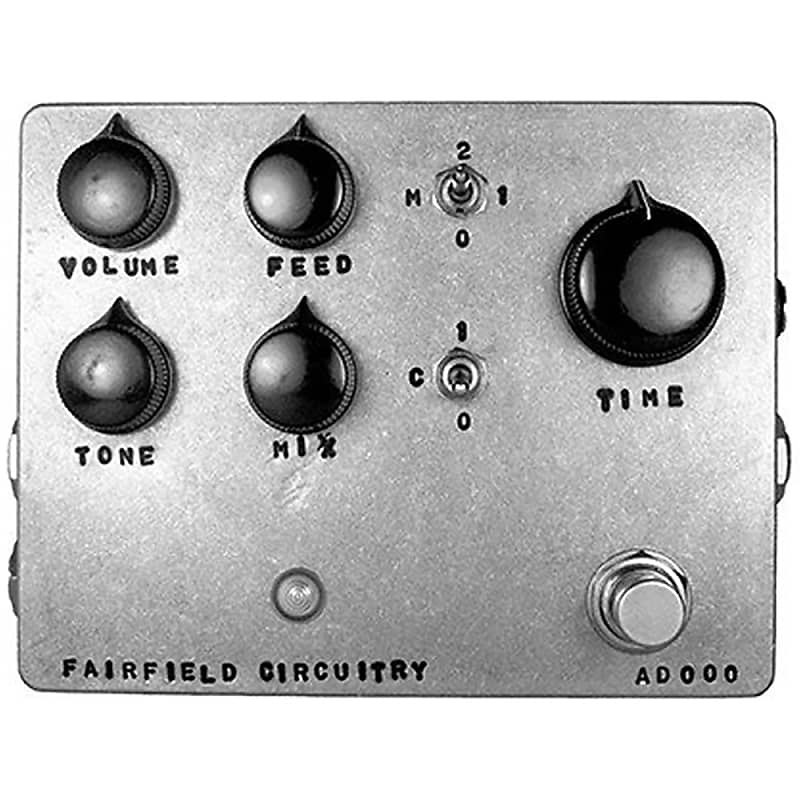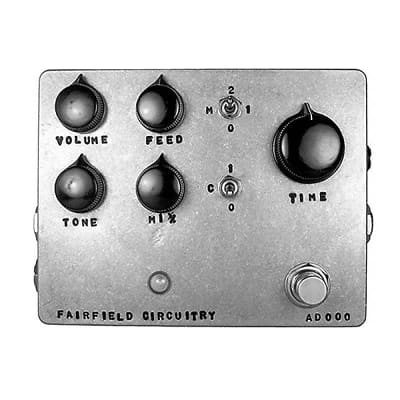Imparting a dark and tape-like quality to your sound, this analogue delay offers a rich and distinct character for you to wallow in luxury, self-righteousness and filth. åÊ
Using the tone and feedback controls, you can shape your repeats toåÊbe much more than simple reproductions of the input. Play right on the threshold of feedback, which you can mold as a low thundering growl or screeching wail, or let your echo slowly die out as the dynamic output filter gets darker every repeat.
A random delay time modulation adds a true tape feel to the delay,åÊlike a reel-to-reel motor spinning not quite perfectly. Full CV capabilities allow you to control delay time and/or feedback with any external source, like an expression pedal.
åÊ
Features:
COMPRESSOR
The first stage of the delay effect path is a discrete JFET feedback compressor. This section evens out the dynamics of your signal to prevent distortion in the delay stage.
The dry signal (going to the Mix) does not go through the compressor, but the feedback signal does.
TONE AND FEEDBACK
Meet Maude‰Ûªs tone control will accentuate eitherthe high (clockwise) or low (counter-clockwise) frequencies of your delay signal. In the center
position, there is a slight attenuation of the lower mid frequencies.
Feedback (how much of the effect output is re-applied at the input) and tone work very closely together, since every repeat goes through the tone section. In practice, you will notice that tone affects feedback in two ways: it changes the feed-back‰Ûªs colour (ex.: bright tone gives bright feed-back) and changes the feedback‰Ûªs threshold (the further from the center position the tone control is, the faster the effect will go into feedback).
DELAY TIME MODULATION
A random modulation can be applied to the delay time. This modulation is an offset that is added to the delay time, making it jump up or down in an unpredictable way.
VOLTAGE CONTROLLED FILTER (VCF)
To deal with the noise generated by the delay section, the ouput is gated by a voltage controlled low-pass filter. The filter opens when the signal is loud, and starts to cut out high frequencies as it becomes quieter. This serves to attenuate any ‰ÛÏwind noise‰Û when you are not playing, and also shapes your repeats by making each sound a little darker. This effect will be more noticeable when you are playing softly.
CV JACK
By default, the CV (Control Voltage) jack is used to control feedback amount with an expression pedal (wiper to tip standard). Using the micro-switches inside the enclosure, the CV jack can perform a number of other functions, refer to the Meet Maude Programmer‰Ûªs Manual for a detailed explanation.
Specifications
PHYSICALS
åÊ
- true true bypass
åÊ
- 1/4‰Û mono input/output jacks
åÊ
- 1/4‰Û stereo CV jack
åÊ
- 2.1mm DC connector
åÊ
- 4.7‰Û x 3.8‰Û enclosure dimensions
åÊ
TECHNICALS
åÊ
- input impedance 1 Më©
åÊ
- output impedance 1 kë©
åÊ
- power supply 9 to 9.6 VDC
åÊ
- current draw 60 mA
åÊ
- delay time 50 to 500 ms



